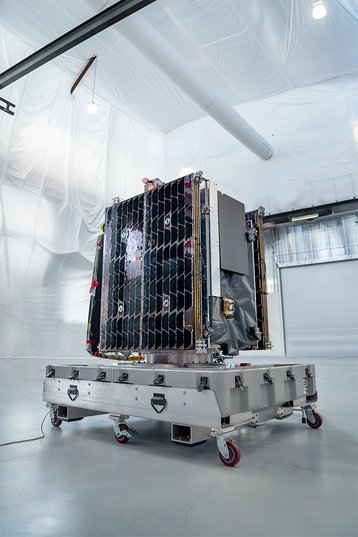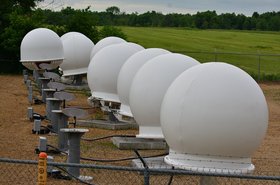An Astranis-manufactured satellite due to provide broadband to Alaska has suffered a critical power issue. It is the second major issue for newly-launched satellites this week.
Founded in 2015, California-based Astranis develops small – around 350kg – geostationary communications satellites that are much smaller than traditional GEO machines, which can weigh multiple tons.
In April this year, the company successfully launched its first commercial satellite, Arcturus, into orbit to provide Internet to Alaska for local telco Pacific Dataport. The machine was set to offer 7.5Gbps of throughput in the Ka-band.
However, the company this week announced that an issue with the system that controls the Arcturus satellite’s solar panels means it doesn’t have enough power to provide constant connectivity services.
Though the company is in control of the satellite, SpaceNews reports that Astranis estimates it can only get six to 12 hours a day of service from the spacecraft. The company said the malfunctioning spacecraft could still be used as an in-orbit test bed or another alternative mission.
“A vendor-supplied component for our Arcturus satellite has had an anomaly, so we'll have to delay starting service in Alaska and repurpose the satellite for secondary missions,” Astranis CEO John Gedmark tweeted this week. “All Astranis-designed hardware on the spacecraft works perfectly.”
Astranis said the satellite reached its orbital slot and began working. However, Arcturus then “abruptly experienced an anomaly with a vendor-supplied component” known as a solar array drive assembly (SADA). SADAs control the satellite’s solar panels to make sure they’re always pointed at the sun.
“An issue with that component can mean the satellite cannot maintain full power to the payload 24/7,” Gedmark said. The vendor of the offending component hasn’t been named.
The CEO said the company has reproduced the problem on the ground and identified the source of the failure, which will be corrected for future spacecraft.
“Because this failure occurred within the internal workings of a component supplied by an external vendor, we’re not in a position to go into the full technical details,” he said. “But what we can say is we know exactly how to quickly solve this issue on future spacecraft that are in production as we speak.”
The company said instead of immediately sending a full-sized replacement, it will be sending a smaller multi-purpose satellite that can operate as an on-orbit spare – a previously undisclosed machine known as a UtilitySat – that can act as ‘a bridge’ to a full replacement satellite.
The UtilitySat reportedly has Ka, Ku, Q, and V band transponders. According to TechCrunch, while the UtilitySat is the same size as Arcturus, it will have lower capacity and won’t entirely make up for the lost coverage.
Astranis plans to have multiple UtilitySats in orbit at any given time, enabling the company to respond to unexpected surges or changes in connectivity demand.
A full replacement for the problem satellite is expected to be delivered in early 2025 and offer higher throughput.
Pacific Dataport is yet to comment publicly on the news.
Viasat’s 6,400-kilogram ViaSat-3 Americas satellite, which was aboard the same SpaceX rocket that launched Arcturus, also suffered a critical issue during deployment. The 1Tbps Ka-band GEO satellite’s giant reflector suffered an issue during deployment and may not be able to provide services.
According to SpaceNews, Astranis has not seen anything suggesting a connection between the two incidents.
A third communications satellite on the same Falcon Heavy mission, a small cubesat from Gravity Space, has passed all health checks and is preparing to enter service in the coming weeks, its CEO Mark Thompson told the publication.
US-based mobile satellite connectivity specialist Anuvu, Peruvian cellular backhaul provider Andesat, Mexican telco Apco Networks, and Orbits Corp have also ordered satellites from Astranis.
Announced earlier this month, Astranis is to launch and operate a new small broadband GEO satellite in 2024 that will provide connectivity over the Philippines. The company is partnering with local ISP HtechCorp’s satellite subsidiary Orbits Corp.







